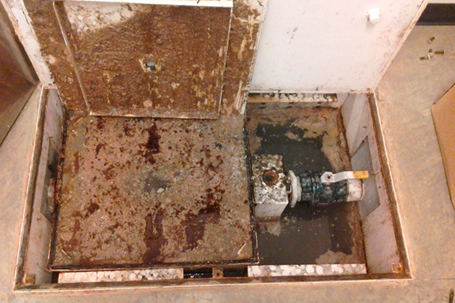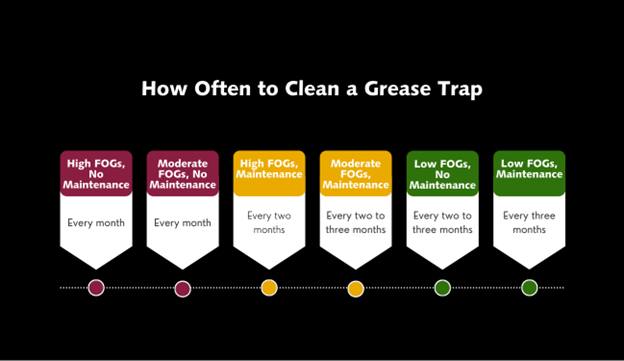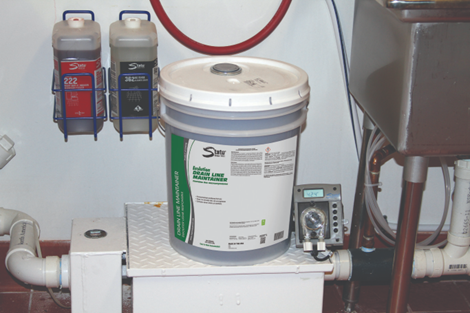What Happens During a Grease Trap Pumping?
What Happens During a Grease Trap Pumping?
You know you have a grease trap, and you know it needs to be regularly pumped. But what is it that actually happens during a grease trap pumping? Exactly how often should it be pumped? What can you do to avoid pumping so frequently?
Since 1911, State Chemical has been providing companies with chemical solutions, including solutions to maintain grease traps and reduce pumpings. We understand it’s frustrating to constantly deal with maintenance, especially when you aren’t sure what the process entails.
To help you understand what grease trap upkeep looks like, we’re going to cover what grease trap pumping is, what happens during a grease trap pumping, how often a grease trap needs to be pumped, and how to reduce the frequency of pumpings. After reading, you’ll understand what happens during a grease trap pumping and how to best maintain your grease trap.
What is Grease Trap Pumping?
First and foremost, what is grease trap pumping?
When you use your sinks, they slowly collect fats, oils, and greases (FOGs), which can form buildup and clogs if not controlled. This is why you have a grease trap in high-FOG environments; grease traps help to prevent this buildup further down the drain line by collecting FOGs and other organics.
However, at a certain point, the grease trap starts to collect so many FOGs that the system is overwhelmed. The grease trap can’t dispose of buildup on its own; it only collects. Eventually, there will be so much gunk in the grease trap that it may overflow into the drain line and start gathering in your pipes.
Think of it like filling a bucket with sand and water at the beach. Initially, you might have the perfect mixture to build your sandcastle. But over time, as the sun dries up the water and you keep adding sand to your bucket, the sand will congeal and become harder to get out of the bucket. Eventually, you’ll have to wash out the bucket—it's too hard to empty with even a shovel.
The same principle applies to grease traps. You must complete grease trap pumpings regularly, or you will experience drain problems and odors.
What Happens During a Grease Trap Pumping?
In order to best maintain your grease trap, it’s important to realize what actually happens when your grease trap gets pumped.
To schedule a grease trap pumping, contact a licensed pumping company. It may be tempting to try to handle the problem yourself, but chances are you don’t have the proper equipment to handle this kind of job, and local laws often require that the job be completed by a professional.
The service will conduct the pumping by removing your grease trap cover. Then, they will stick a vacuum hose into the grease trap to suck up any solids. This can include congealed FOGs, food scraps, or anything else caught in your grease trap since its last cleaning.
From there, the grease trap must be vacuumed to remove any remaining water. This enables the pumping company to scrub out the sides and bottom of your grease trap to remove any congealed sludge. Then, the company will vacuum out any water from the cleaning process.
Lastly, they will clear the inlet and outlet of any obstructions and inspect the grease trap to ensure everything is functioning properly. The company will then properly dispose of the FOGs collected from your facility.
How Often Should Grease Traps Be Cleaned?
Grease trap pumpings should generally occur every one to three months—more frequently if you experience more FOG drainage and somewhat less frequently if you experience less FOG drainage. Once your grease trap is about one-quarter full, it’s time to pump.
It’s important not to miss this scheduled maintenance, or you risk pipe problems. Buildup happens even if you forget, so be proactive and make a schedule so that your facility’s grease trap is as clean and functional as possible.
Reduce How Much You Clean Your Grease Trap
Frequent cleanings add up in price, so regular preventative maintenance is the best way to keep cleanings to a minimum.
What do we mean when we say preventative maintenance? This can be any action that prevents FOG buildup.
Control FOG Drainage
Firstly, controlling how many FOGs go down your sink can impact how often you pump your grease trap. If there are less FOGs to pump, pumping can occur less frequently.
To control FOG drainage, educate your staff on what should and should not go down a drain and provide proper grease disposal containers. If your whole facility makes an effort, your grease traps will handle less destructive buildup.
Chemical Drain Maintenance
Your other option is to use chemical maintenance to control FOG buildup in your grease trap. Chemical drain maintainers are products that either liquefy or break down FOGs so that they can easily pass through the pipes without forming buildup or clogs.
If you use chemical drain maintainers in grease traps, your grease trap will take longer to fill up with FOGs, meaning you’ll be able to wait longer before pumping out these FOGs. For example, if you currently pump out your grease trap monthly, you may be able to change this to quarterly.
This can be a useful maintenance tool if your facility experiences high levels of FOG drainage and frequent grease trap pumpings.
Your Next Step: Maintain Your Facility’s Grease Trap
Grease trap pumpings can be costly, time-consuming, and all-around confusing. Now that you know what happens during a grease trap pumping, your next step is to consider the pros and cons of chemically treating your grease trap.











